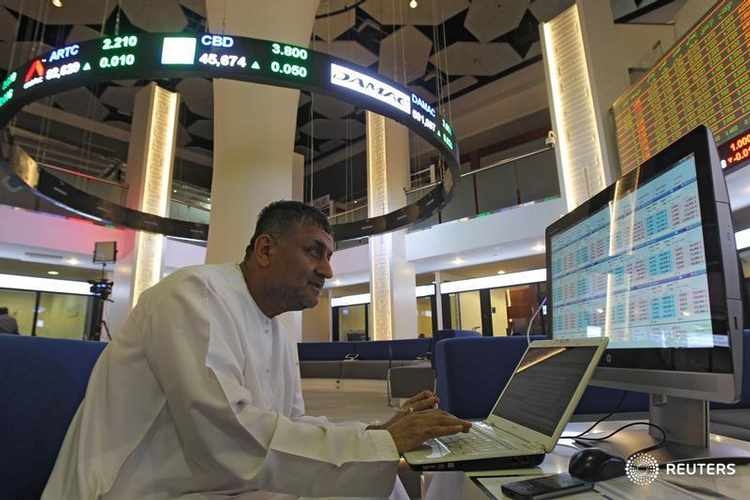Sunday, August 04, 2019
Zawya – Right time to invest? UAE equities attractive on low valuations, positive indicators
By Vijay Valecha in 'Century in News'

Key catalysts such as increasing liquidity, lower interest rates will help stock market
An investor is seen at the Dubai International Financial Market, in Dubai, UAE April,16, 2018.REUTERS/Satish KumarBy Rohma Sadaqat, Khaleej Times
UAE – Investors waiting for the right moment to invest in the UAE markets need not wait any longer, as several key catalysts such as the increase in foreign ownership limit, government spending, and consolidation in banks have created a landscape of positive economic indicators that is favourable to investors, experts said.
Speaking at a forum on Sunday, Ali Al Adou, head of asset management at Daman Investments, said that while UAE markets have underperformed, key catalysts such as increasing liquidity and lower interest rates will help the market rebound. The macroeconomic slowdown, he said, was due to several reasons, including the escalation in geopolitical tensions; Saudi Arabia and Kuwait’s MSCI and FTSE inclusions; and a lack of diversification and liquidity.
In addition, real GDP growth has trended downwards due to a slowdown in key sectors during the 2015-18 period. Government spending as a percentage of the GDP has decreased during this period.
“We also seen a slowdown in the UAE’s tourism sector,” he said. “Tourist arrival growth continues to decelerate in Dubai, driven by a decline in arrivals from core markets such as India, Saudi Arabia, and the UK. There has also been a sharp devaluation in currencies of other key source markets such as Russia, Iran, and Pakistan. This means that the UAE has become an expensive destination for travellers from these countries.”
Shehab Gargash, chairman and founder of Daman Investments, said that the UAE has always been seen as an economic haven, especially during periods of unrest in the region. Though there have been a limited number of IPOs over the last four years, he said that he was looking forward to what the future would bring. “The IPO channel is always open here.”
Al Adou added that the continued strength in oil prices is the first of many positive indicators. “A strong rebound in prices has increased the government’s ability to spend; Brent crude oil’s price has increased by 18 per cent year to date (YTD).”
The YTD average price of oil of $66 per barrel is close to the UAE’s 2019 fiscal break even price of $65 per barrel. As a result, the fiscal deficit is projected to fall to 0.8 per cent of the GDP in 2019 from 1.8 per cent in 2018.
Another positive indicator is the recent announcements in government spending and other economic initiatives. Abu Dhabi announced a wide ranging Dh50 billion investment and economic stimulus for the 2019-21 period. Key policies announced include an agreement with FAB to guarantee up to 75 per cent of bank loans to SMEs. Also, Adnoc is aiming to raise its production capacity and plans to spend Dh486 billion between 2019-23; this spending will stimulate private sector growth and create jobs.
Lastly, the consolidation which has started in the UAE’s banking sector, is already beginning to reflect on the sector’s profitability.
Shailash Dash, a financier and entrepreneur, said that the current banking sector mergers will create more solid banks with greater liquidity which should drive the credit growth in the market. “The current indications are that we should see more activity in the basic sectors like real estate and banking in the coming months,” Dash told Khaleej Times on Sunday.
“All the indicators in real estate show an uptrend among the sector both in the primary and secondary markets even though with a price correction.”
Lewis Allsopp, chief executive officer of Allsopp & Allsopp, noted that the property market has dropped a considerable amount over a four-year period, which has left developer prices being over the market value when compared to what is available in the re-sale market. However, new launches can still sell out in one day, but, only if the development is priced correctly.
“Developers are continuing to build properties and are now offering post payment plans over five years to attract end-users. Some developers are offering attractive payment plans which gives buyers the opportunity of paying as little as five per cent to receive the keys and paying the balance remainder over the next five years. This is a great initiative to attract the key component in the market – end users,” he said.
source :
__565361333.jpg)
__1702287518.jpg)
__1239930142.jpg)
__396687930.jpg)
__196023842.jpg)




.png)
.png)
.png)
.png)


